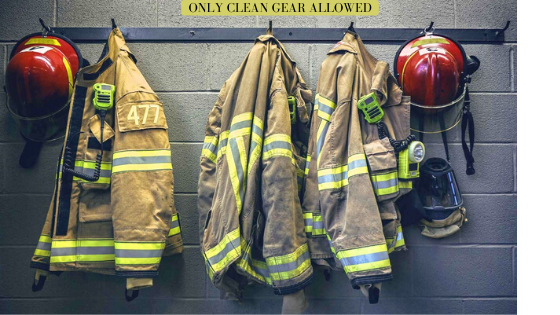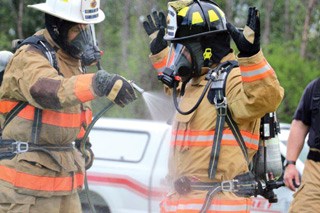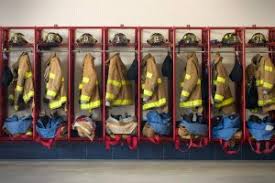
Tattered, frayed, and rugged are just a few of the adjectives to describe firefighter gear. Some veterans will even tell you that during their day, the more worn out their gear is, the better their street cred. Their beaten up equipment signifies how seasoned they are in the field.
While looking stained is a definitive sign of being in the heart of the action for firefighters, keeping one’s gear dirty is not recommended. It might look great while you’re in motion but it can affect the quality and safety performance of your gear.
Contents
The Importance of Proper Firefighter Turnout Gear Maintenance
But one may think: why should you clean up your turnout gear if it’s going to get soot, ash, and smoke all over it anyway? Why bother, right?
Well, it’s all about the maintenance of the gear. Cleaning your turnout gear will help restore it to a great working order. Furthermore, this prevents the damaging debris and other stuff from further harming the material and integrity of the garments.
SEE ALSO:
By properly caring for your turnout gear, the longer its shelf life can last. In turn, it can protect the wearer effectively for longer as well.
Turnout gears are pieces of safety equipment, too, as you would know. So if you let it deteriorate by not restoring it to a good condition after use, the easier it will get damaged. Once it’s in bad shape, it won’t be very effective in keeping the wearer safe anymore.
You may as well sell your used firefighting gear in the future. Of course, the better it looks, the higher the market price it may attract.
How to Clean Turnout Gear
Regularly cleaning your firefighter gear is an essential step to keep them in good condition. How do you do this? Here are the steps:
- Brush off the debris from the surface and rinse off the gear after every use. Pre-treat the areas that are heavily soiled using a mild detergent.
- If the liners of the gear are detachable, take them out and wash them separately. This will prevent damage and the transferring of contaminants from one layer to another.
- Turn the liner inside out for more thorough washing and drying.
- Fasten all closures and cover all hooks and loops to prevent snagging, damage, and premature wear.

- Machine washing is not recommended for proximity gear. This isn’t the case for structural gear as you can wash them in front-loading machines without agitators. There are some special machines made for firefighter gear, that you can use for such garments, too. Strictly stick with 85-100 Gs for the extractor G-force. For top-load washers, use a laundry bag to prevent snagging and damage on the turnout gear. Never use the same washer for your regular clothes to wash turnout gear.
- Always dry the garment properly after cleaning, especially if it got wet.
Guidelines to Keep the Firefighter Gear Immaculate
So how do you maintain your turnout gear properly? Due to the specificity of these items, you can’t just wing the upkeep and care of your turnout gear. This is why the National Fire Protection Association came up with its guidelines for this specific task.

The NFPA 1851, Standard on Selection, Care, and Maintenance of Protective Ensembles for Structural Firefighting and Proximity Firefighting notes the minimal requirements in the proper care and maintenance of firefighter gear. Here are the basic requirements:
- Inspect your clothing after each use to quickly spot and address issues right away. Advanced inspections are recommended to be done at least once a year.
- Keep your firefighter protective gear clean all the time as doing so will help ensure its good performance. There are three required ways to clean one’s gear:
- Routine cleaning that only requires brushing off debris and rinsing off after. Pre-treat the areas that are heavily soiled.
- Advanced cleaning is required every 6 months and involves more thorough steps in cleaning the gear.
- Specialized cleaning is necessary when the protective clothing got contaminated by a toxic liquid or pathogens.
- Always dry the garment properly after cleaning, especially if it got wet.
- In case your gear got damaged, have it repaired by professionals. Do not try to DIY it as there’s a chance that it won’t be effective enough to provide protection to the wearer again.

- Store your gear properly, preferably away from direct sunlight and away from contaminants.
- Let your gear go when it’s already considered to be unsafe. These things may not have definitive best before dates but they can still get expired when they can’t effectively do their jobs anymore. Be willing to retire them if they’re already very worn out.
- Machine washing is not recommended for proximity gear. Structural gear, on the other hand, are best washed with washing machines that do not come with agitators and are designated for washing firefighter gear. These are crucial to keep your protective clothing in clean status.
Aside from the recommendations of the NFPA, you should also heed the cleaning tips of your gear’s manufacturer.
The folks behind the protective gear will tell you lots of useful information about their product that will further help you keep your gear in the best state. Keep them in mind and use them alongside the NFPA 1851 guidelines and you can be sure to keep your firefighting protective gear in good shape.
Conclusion
Keeping your firefighter gear in great condition will help guarantee better protection, so proper maintenance for these items is always a must.
The process is not too complicated, so do not be daunted by it. Since the gear is special, it certainly deserves some tender love care. Make sure to exert the effort for their upkeep.